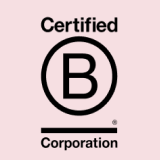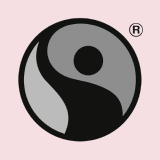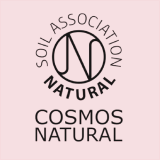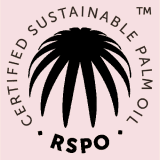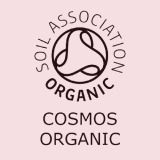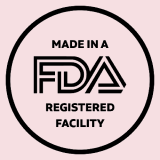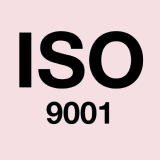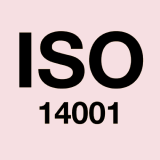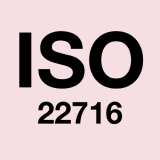Mt
Materials.
Fm
Forms.
Cl
Closures.
Ds
Design.
Ot
Outers.
Mt
Materials.
Transparent • Lightweight • Durable • Chemical Resistance • Versatile
Acrylic is durable and impact-resistant, making it ideal for packaging fragile items. Acrylic is transparent, so consumers can see the product inside and choose it more easily. Acrylic can be easily shaped and sized, giving designers more design options. Manufacturers and consumers appreciate its lightweight and portability. Acrylic can be printed or decorated, allowing for creative designs. Acrylic is recyclable and eco-friendly.
Lightweight • Barrier Resistance • Recyclable • Aesthetically Pleasing
Aluminium is a popular choice for cosmetic packaging due to its numerous advantages. First, it’s light and robust, making it portable. It resists corrosion and doesn’t react with the package’s contents, preserving the product’s purity. Third, aluminium’s sleek, modern look enhances the product’s aesthetics. It can be embossed, printed, or decorated, allowing creative designs. Finally, aluminium is eco-friendly because it can be recycled indefinitely. These advantages make aluminium ideal for cosmetic packaging.
Eco-Friendly • Sustainable • Biodegradable • Aesthetically Pleasing
Wood’s unique properties make it a popular cosmetic packaging material. It is more sustainable than many other materials because it can be sourced from responsibly managed forests. Wood is biodegradable and doesn’t pollute. Wood gives cosmetic products a natural, high-end look and feel. Wood can also be easily moulded and shaped, making it ideal for cosmetic packaging. Finally, wood can insulate the product inside the container from temperature changes. Wood is eco-friendly, sustainable, biodegradable, versatile, and aesthetically pleasing.
Transparent • Chemical Resistance • Aesthetics • Recyclable
Glass is a highly suitable material for cosmetic packaging for several reasons. Firstly, glass is an inert material that does not react with the package’s contents, ensuring the product’s purity and integrity. Secondly, glass is impermeable to air, moisture, and other environmental factors, which helps preserve the product’s quality and shelf life. Additionally, glass is highly customisable and can be moulded into various shapes and sizes to accommodate different products and branding needs. Glass also provides a premium and luxurious feel, highly desirable in the cosmetics industry. Furthermore, glass is 100% recyclable and environmentally friendly, making it a preferred choice for eco-conscious consumers. Overall, the numerous benefits of glass make it an ideal material for cosmetic packaging.
Durable • Chemical Resistance • Versatile • Transparency • Affordable
Polypropylene (PP) can withstand rough handling and impact, making it suitable for cosmetic product storage and transportation. PP is resistant to many chemicals, including many cosmetic ingredients, so it won’t react with the container’s contents, preventing product contamination. PP can be moulded into many shapes and sizes, making it suitable for bottles and tubes of cosmetics. PP can also be transparent or opaque, letting customers see the product inside. PP is also a very affordable material making it ideal for mass and masstige brands. PP is ideal for cosmetic packaging due to its durability, chemical resistance, versatility, transparency, and affordability.
Chemical Resistance • Durable • Lightweight • Affordable
Polyethene (PE) plastic is a popular material used in cosmetic packaging due to its numerous benefits. First and foremost, it is a lightweight material that is easy to handle and transport, making it a cost-effective option for manufacturers. Additionally, PE plastic is highly resistant to chemicals and moisture, ensuring the product stays safe and fresh inside the packaging. It is also durable and can withstand wear and tear during transportation and handling. Another key benefit of PE plastic is that it can be easily moulded into different shapes and sizes, allowing for versatile packaging designs. Furthermore, it is a recyclable material, making it an environmentally friendly option that aligns with sustainability efforts. All these factors make PE plastic an ideal choice for cosmetic packaging.
Transparent • Lightweight • Barrier Resistance • Chemical Resistance • Recyclable
Not all plastic laminates are safe and quality enough for cosmetic packaging. However, cosmetic-packaging plastic laminates have several advantages. These laminates can be customised to protect cosmetic products from moisture and oxygen. Plastic laminates give products a glossy, high-quality look. They can also be easily printed with branding and product details for clear and attractive labelling. Plastic laminates can be reliable cosmetic packaging if tested and certified.
Sustainable • Conversation • Carbon Footprint • Consumer Preference
Using Post-Consumer Recycled (PCR) Plastic, brands can reduce their carbon footprint by diverting plastic waste from landfills and incineration facilities. Additionally, PCR plastic can be less expensive than virgin plastic, saving cosmetic companies costs. PCR plastic has similar properties to virgin plastic, so it can be used in various cosmetic packaging applications without sacrificing quality or durability. Using PCR plastic in their packaging, cosmetic companies can show their commitment to sustainability and contribute to a more circular economy.
Barrier Resistance • Chemical Resistance • Clarity • Safety
Ethylene-vinyl alcohol (EVOH) is a copolymer barrier material known for its excellent oxygen and moisture barrier properties, making it ideal for products requiring extended shelf life. In cosmetic packaging, EVOH can be used as a lining material to prevent the permeation of air and moisture, which can cause product degradation over time. Additionally, EVOH is transparent, which allows consumers to see the contents of the package, enhancing the product’s appeal. Moreover, EVOH is resistant to chemicals and oils, which makes it suitable for packaging products such as perfumes and lotions. Furthermore, EVOH is a safe and non-toxic material that meets FDA regulations, ensuring the product is safe for consumer use. Overall, the barrier properties, transparency, chemical resistance, and safety make EVOH highly suitable for cosmetic packaging.
Lightweight • Barrier Resistance • Chemical Resistance • Recyclable
Polyethylene Terephthalate (PET) is suitable for cosmetic packaging due to its durability, transparency, and versatility. PET is a lightweight material resistant to impact and shattering, making it an ideal choice for cosmetic packaging that requires protection during transportation and storage. Additionally, PET is transparent, allowing customers to easily see the product inside, which is especially important for cosmetic products often displayed on shelves. PET is versatile and easily moulded into different shapes and sizes, making it suitable for various cosmetic packaging applications. Furthermore, PET is recyclable and has a low carbon footprint, making it an environmentally friendly option for cosmetic companies looking to reduce their environmental impact.
Sustainable • Biodegradable • Customisable • Cost-Effective
Eco-friendly biodegradable paper is ideal for cosmetic packaging. It’s biodegradable and compostable because it’s made from wood pulp or recycled paper. It will decompose naturally, leaving no pollutants or residue. Oil and moisture-resistant biodegradable paper protects package contents. Biodegradable paper can be printed or decorated, enabling creative designs. Biodegradable paper for cosmetic packaging meets the growing demand for eco-friendly products. Biodegradable cosmetic packaging shows a company’s commitment to sustainability and social responsibility as consumers become more environmentally conscious.
Durability • Chemical Resistance • Transparency • Heat Resistance • Affordability
Styrene Acrylonitrile (SAN) resin is a popular material for cosmetic packaging due to its unique properties. First, it protects cosmetics because it is lightweight and durable. SAN doesn’t react with chemicals, including cosmetic ingredients like oils and lotions so it won’t contaminate the container’s contents. SAN can be formed into bottles, jars, and tubes for cosmetic packaging. SAN is transparent so that consumers can see the product inside the container. SAN is heat-resistant, making it suitable for products that need extra temperature protection. Finally, SAN is affordable for cosmetic packaging manufacturers.
Chemical Resistance • Durable • Lightweight • Affordable • Sustainable
Preventative Ocean Plastic (POP) is a sustainable material that helps reduce plastic pollution in our oceans by repurposing plastic waste before reaching marine environments. One key advantage of POP for packaging is its chemical resistance. This ensures that the contents of the packaging remain safe and uncontaminated, preserving the integrity of beauty and personal care products. POP is also highly durable, providing robust protection during transportation and handling, thus reducing the risk of damage and product loss. In addition to its durability, POP is lightweight, making it an economical choice for manufacturers. The reduced weight translates to lower transportation costs and a smaller carbon footprint, aligning with the industry’s growing demand for eco-friendly practices.
POP is also affordable, offering cost savings for companies balancing sustainability with budget constraints. Its ability to be easily moulded into various shapes and sizes provides flexibility in packaging design, allowing brands to create unique and appealing product presentations.
Moreover, using POP aligns with sustainability goals, supports recycling efforts, and promotes a circular economy. Companies can contribute to environmental protection by choosing POP for packaging while meeting consumer expectations for sustainable products.
Materials.
We’re Living In A Material World.
Brands need to consider several factors when choosing their packaging materials. Firstly, they must consider the product’s compatibility with the material, as some materials may react with specific formulations. They must also consider the product’s shelf life and how the packaging material will protect it from light, air, and moisture.
Additionally, brands need to consider the material’s environmental impact and recyclability or biodegradability. They also need to consider the material’s overall aesthetic appeal and how it aligns with the brand’s image and values. Finally, they need to consider the material’s cost and feasibility in terms of production, shipping, and storage. Overall, brands must choose a material that provides functional benefits, aligns with their sustainability goals, and enhances their brand perception.
Fm
Forms.
Versatile • Aesthetically Pleasing • Durable • Sustainability
Materials. HDPE. PET. PETG. PP. Glass. Aluminium.
Fill. 5ml – 1000ml.
The beauty industry has long favoured using bottles for cosmetic packaging due to their numerous benefits. Bottles offer a versatile and customisable solution in various materials, shapes, and sizes, allowing brands to craft a distinct and visually appealing presentation that appeals to their target market. Moreover, the transparency of specific bottle materials, such as glass or clear plastic, enables customers to assess the remaining product quantity effortlessly, ensuring a convenient and practical user experience.
Additionally, bottles frequently feature a variety of dispensing options like pumps, droppers, and spray nozzles, which promote accurate and controlled application, minimising product waste and boosting consumer satisfaction. Furthermore, glass bottles or those made of recyclable plastics promote environmental sustainability by encouraging recycling and reducing waste in the beauty sector.
Practical • Aesthetically Pleasing • Environmentally Responsible
Materials. Biodegradable Paper. PE. PET. PP.
Fill. 40g.
With consumers becoming more focused on environmental sustainability, they are looking to invest in brands that are conscious of the impact their packaging has on the environment. In the UK we’ve seen the rise of the refillable deodorant from brands such as Willd & Fussy, where consumers will purchase a starter kit with a piece of “keepy” packaging along side capsules, pods or refillable cartridges that can loaded into the “keepy” packaging to deliver the product in a familiar manner giving consumers a personalised and innovative experience.
Practical • Aesthetically Pleasing • Environmentally Responsible
Materials. Aluminium. HDPE. Heavy-Walled PET. LDPE. PE. PET. PETG. PP. Wood.
Fill. 5g – 30g.
Compacts are highly portable and convenient, perfect for on-the-go touch-ups and travel. They often come with integrated mirrors and applicators, streamlining the user experience and facilitating precise application. Compacts are also available in various sizes, shapes, and materials, allowing brands to create distinctive and visually appealing packaging that aligns with their brand identity. This customisation potential helps to attract customers and improve brand recognition. Furthermore, compacts can be designed with refillable features, promoting sustainability by reducing packaging waste and encouraging container reuse. These eco-friendly attributes appeal to environmentally conscious consumers and bolster a brand’s commitment to responsible practices.
Practical • Aesthetically Pleasing • Recyclable
Materials. Aluminium. Glass. HDPE. PE. PET. Heavy-Walled PET. PETG. PP.
Fill. 10g/ml – 500g/ml.
Utilising jars for packaging cosmetics remains a popular choice for various reasons, mainly for creams, lotions, and scrubs. Jars offer a user-friendly and easily accessible packaging solution, enabling consumers to scoop out and apply the desired amount of product conveniently. Available in various materials, shapes, and sizes, jars provide ample customisation opportunities for brands to create an appealing visual presentation that aligns with their unique identity. This flexibility helps to attract customers and elevate brand recognition. Moreover, jars made from glass or recyclable plastics contribute to environmental sustainability, promoting recycling and waste reduction within the industry. Additionally, jars can be repurposed or upcycled, extending their lifecycle and reducing environmental impact. The sturdy and robust nature of jars, particularly those made from glass, also protects the cosmetic product from damage, preserving its quality and efficacy.
Practical • Durable • Environmentally Responsible
Materials. HDPE. rHDPE. PET.
Fill. 2L – 25L.
Jerry cans are a versatile and functional packaging choice for cosmetics, particularly for bulk storage and transporting liquid formulations like shampoos, conditioners, and lotions. These durable containers are designed to withstand rough handling and prevent leaks or spills, ensuring the products remain protected and intact throughout the supply chain. This robustness makes jerry cans ideal for commercial and professional settings, requiring large quantities of cosmetic products. Made from high-density polyethene (HDPE) or other sturdy plastics, jerry cans are lightweight and resistant to chemical reactions, providing an excellent barrier against contamination and preserving the quality of the cosmetic products stored within. Furthermore, their stackable design maximises space efficiency during storage and transportation, contributing to cost savings and operational effectiveness. Additionally, the recyclable nature of the materials used in jerry cans supports the cosmetics industry’s ongoing sustainability efforts by promoting recycling and waste reduction.
Practical • Aesthetically Pleasing • Environmentally Responsible
Materials. LDPE. PET. Metalised PET. Aluminium. PE-EVOH.
Fill. 250ml – 1000ml.
The rising popularity of pouches for cosmetic packaging, including stand-up and spouted pouches, can be attributed to their versatility, convenience, and environmentally friendly properties. These lightweight and flexible packaging solutions are perfect for on-the-go use and travel, ensuring consumers can effortlessly carry and apply their favourite products. Cosmetic pouches are available in various materials, such as Aluminium, LDPE, PET, Metalised PET, PE, and PEEVOH, each offering unique benefits. Aluminium pouches provide excellent barrier properties and a premium look, while LDPE and PE pouches are known for their flexibility, durability, and moisture resistance. PET pouches offer superior clarity, strength, and recyclability, and Metalised PET pouches combine PET benefits with added protection from light and moisture. PEEVOH pouches ensure product freshness with exceptional barrier properties against oxygen, light, and humidity. The compact nature of pouches contributes to sustainability efforts within the cosmetics industry by minimising waste and supporting eco-friendly practices. The airtight and leak-proof design of pouches helps maintain product quality and freshness while preventing spills and messes. Pouches also often feature dispensing options like spouts or flip-top caps for precise and controlled product application, enhancing customer satisfaction in the beauty sector.
Practical • Aesthetically Pleasing • Environmentally Responsible
Materials. LDPE. PET. Metalised PET. Aluminium. PE-EVOH.
Fill. 5g/ml – 100g/ml.
Tins are commonly used in packaging cosmetics due to their durability, vintage appeal, and environmentally friendly properties. Often used for solid formulations like balms, creams, and powders, tins provide a sturdy and robust packaging solution that protects the product from damage, ensuring its quality and efficacy. Their airtight and resealable design helps maintain product freshness while preventing contamination and oxidation. Tins offer a distinct aesthetic advantage with their nostalgic and classic appearance, allowing brands to create visually appealing packaging that stands out on the shelf and captures consumer attention. The versatile nature of tins enables customization in size, shape, and design, which helps enhance brand recognition and customer loyalty. Made from recyclable materials like aluminium or tinplate, tins support sustainability efforts within the cosmetics industry by promoting recycling and reducing waste. Their reusability and upcycling potential further contribute to minimizing environmental impact.
Practical • Aesthetically Pleasing • Durable • Environmentally Responsible
Materials. PE. HDPE. LDPE. PET. PETG. PP.
Fill. 10ml – 500ml.
Tottles have emerged as a popular packaging solution for cosmetics, particularly for products such as lotions, creams, and gels, owing to their practicality, convenience, and visual appeal. Combining the benefits of bottles and tubes tottles feature a sturdy base and an inverted design that allows the product to flow downward, facilitating easy dispensing and minimizing product waste. This user-friendly design ensures that consumers can access the desired amount of product without hassle. Tottles are available in various materials, sizes, and shapes, offering ample customization opportunities for brands to create visually appealing packaging that aligns with their unique identity. This flexibility helps to attract customers and elevate brand recognition. Furthermore, tottles made from recyclable plastics contribute to environmental sustainability by promoting recycling and waste reduction within the cosmetics industry. Their durable and leak-proof design protects the cosmetic product from damage, preserving its quality and efficacy.
Practical • Aesthetically Pleasing • Durable • Environmentally Responsible
Materials. EVOH. Laminate. PE. PP.
Fill. 5ml – 400ml.
Tubes are a go-to packaging option for cosmetics, especially for products like creams, gels, and ointments, due to their practicality, user-friendliness, and visual appeal. They offer a lightweight and portable solution, making them ideal for on-the-go use and travel, ensuring that consumers can easily carry and apply their favourite products. Tubes come in various materials, sizes, and designs, enabling brands to create visually appealing and unique packaging that appeals to their target audience and enhances brand recognition. The collapsible nature of tubes helps reduce product waste, as consumers can easily squeeze out the desired amount of product, maximising usage and value.
Furthermore, tubes can be made from recyclable materials, such as aluminium or certain plastics, supporting environmentally friendly practices within the cosmetics industry by promoting recycling and waste reduction. The airtight and leak-proof design of tubes helps maintain product quality and freshness while preventing spills and messes. Tubes often come with dispensing options, such as flip-top caps or applicator tips, which enable precise and controlled product application.
Forms.
The Shape Of Things To Come.
Cosmetics can be found in various containers, from jars to bottles to tubes to pumps to sprays. When deciding on a packaging format, brands must consider several factors. They must first consider the product’s consistency and viscosity; different packaging styles work better with various formulas. Some demographics may find different formats more appealing or practical, so it’s essential to consider who will be using the product and how they’d like it.
Brands must also consider how long the product will stay fresh and how the packaging will prevent it from getting damaged. They should also consider the aesthetic value of the packaging and its unity with the brand’s identity. Ultimately, brands need to settle on a format that improves the user experience and how consumers view the brand itself.
Cl
Closures.
Product Protection • Reduced Waste • Consumer Experience • Aesthetically Pleasing
Airless packaging has revolutionised the cosmetics industry by offering various benefits catering to manufacturers and consumers. This innovative packaging solution enhances product longevity by protecting sensitive ingredients from oxidation, contamination, and bacteria, thus ensuring optimal product efficacy and quality. The vacuum-sealed design minimises waste by allowing for the complete extraction of cosmetic products, improving customer experience and cost savings. In addition, reducing the preservatives required for these air-tight containers contributes to a healthier and more eco-friendly formulation. By safeguarding the integrity of cosmetics, airless packaging ultimately enhances consumer satisfaction, strengthens brand reputations, and drives sustainable development within the industry.
Protection • Hygiene • Convenience • Customisation • Sustainability
Materials. Acrylic. Aluminium. HDPE. LDPE. PE. PET. PETG. PP
Integrates. Bottle. Capsule. Jar. Jerry Can. Pouch. Tin. Tottle. Tube.
Neck Size. 15mm – 43mm.
Brands must consider several factors when choosing a cap form. First, they must consider the product’s consistency and viscosity. Some caps are better for thicker or thinner formulas. They must also consider the target audience and how they use the product. Some caps may be more convenient or appealing to specific demographics. Brands should also consider the product’s shelf life and how the cap will prevent contamination and degradation. The cap’s aesthetics and brand values must also be considered. Finally, they must consider cap form production, shipping, storage costs and feasibility.
Controlled Dispensing • Targeted Application • Hygiene • Convenience
Materials. PE. PP.
Integrates. Tube. [Overcap Required]
Neck Size. 15mm – 60mm.
Cannulas are commonly used in cosmetic packaging to dispense products in a controlled and precise manner. Cannulas are particularly useful for products that require a specific amount of product to be dispensed, such as liquid foundations or serums. They also help to prevent over-dispensing of the product, which can lead to waste and messiness. Different cannula shapes can be used in cosmetic packaging for a specific functionality or aesthetic appeal. Cannula shapes can enhance the packaging’s aesthetic appeal, with various finishes and colours available to match the brand’s image and values.
Precision • Convenience • Hygiene • Controlled Application
Materials. PE. PP.
Doe foot applicators are commonly used in cosmetic packaging, particularly for liquid or cream products such as lip gloss, concealer, or eyeshadow. They are named after their shape, which resembles a doe’s foot, with a rounded, tapered tip that allows for precision application. Doe foot applicators are popular for convenience, providing a mess-free and hygienic way to apply the product directly to the skin. They also help reduce product waste and offer a controlled amount of product for each use. Additionally, some doe foot applicators are made from materials that provide cooling or soothing effects, which can be particularly useful for products designed to treat the delicate skin around the eyes or lips.
Precision • Hygiene • Controlled Dispensing • Versatility
Droppers or pipettes are a type of applicator used in cosmetic packaging to dispense a small amount of liquid or serum product onto the skin. They consist of a glass or plastic pipette that attaches to a rubber bulb or squeeze top, allowing the user to control the amount of product dispensed. Droppers or pipettes are particularly useful for products requiring a precise application, such as facial serums or oils. They offer a hygienic way to dispense the product, preventing contamination and ensuring consumer safety. Droppers or pipettes also help reduce product waste, allowing for controlled dispensing and preventing over-application. Additionally, droppers or pipettes can enhance the product’s aesthetic appeal, with various finishes and colours available to match the brand’s image and values.
Protection • Convenience • Security • Customisation • Versatility
Lids are an essential component of cosmetic packaging, as they provide a protective cover for the product inside the container, preventing contamination and preserving its integrity and freshness. Lids come in various shapes and sizes and can be made from different materials, such as plastic or metal, depending on the product type and the desired level of protection. They are commonly used for jars, bottles, and tubes and can be designed to provide a secure seal or a snap-on closure, ensuring that the product remains in place and does not leak or spill. Additionally, lids can enhance the product’s aesthetic appeal, with various finishes and colours available to match the brand’s image and values.
Hygiene • Controlled Dispensing • Convenience • Versatility
Material. Acrylic. Aluminium. HDPE. LDPE. PE. PET. PETG. PP.
Neck Size. 15 – 43mm.
Pumps are popular for dispensing liquid or lotion products in cosmetic packaging. Lotion pumps are designed to dispense thicker and more viscous products, such as body lotions or creams, while serum pumps are suitable for thinner and more fluid products, such as serums or oils. Airless pumps preserve the product’s freshness and integrity by preventing air from entering the container, which can cause degradation and oxidation. Pumps offer several advantages, including convenient and hygienic dispensing, controlled dosage, and reduced product waste. Additionally, they can be designed to provide targeted applications, such as foam or mist, enhancing the product’s effectiveness and consumer experience.
Precision • Hygiene • Controlled Dispensing • Cooling/Massaging Effect
Roller balls are an applicator commonly used in cosmetic packaging, particularly perfumes, under-eye, and spot treatments. They consist of a small ball-shaped roller attached to the top of a bottle, dipped into the product and then rolled onto the skin. Roller balls offer several advantages, including precise and controlled application, hygienic dispensing, and reduced product waste. They can also provide a cooling or massaging effect, particularly useful for products that treat puffiness or dark circles. Additionally, roller balls can enhance the product’s aesthetic appeal, with various finishes and colours available to match the brand’s image and values.
Hygiene • Controlled Dispensing • Convenience • Versatility • Customisation
Sprayers are a dispenser commonly used in cosmetic packaging, particularly for facial mists, hair sprays, and body sprays. They consist of a pump mechanism that dispenses the product through a nozzle as a fine mist or spray. Sprayers offer several advantages, including convenient and hygienic dispensing, controlled dosage, and reduced product waste. They provide a mess-free and easy-to-use way to apply the product, with minimal effort required. Additionally, sprayers can be designed to provide a targeted application, such as a fine mist or stream, enhancing the product’s effectiveness and consumer experience. Sprayers also help reduce product waste by allowing users to dispense the amount needed for each use. Overall, using sprayers in cosmetic packaging is a practical and efficient way to distribute various liquid products, enhancing the consumer experience by providing a convenient and hygienic way to use the product while reducing product waste.
Controlled Dispensing • Convenience • Hygiene • Versatility
This design is commonly used for products such as moisturisers or face creams. Central dispensers for jars offer several advantages, including convenience, hygienic dispensing, and reduced product waste. They provide a mess-free and easy-to-use way to dispense the product, with minimal effort required. Additionally, central dispensers for jars are designed to prevent contamination by keeping the product within the system, ensuring consumer safety. They also help reduce product waste by dispensing the amount needed, reducing over-application and product waste.
N.B. Central dispensers require an overcap.
Closures.
Don’t Close Yourself Off.
Various closures are used for cosmetic packaging, including screw caps, flip-tops, pumps, sprays, and droppers. Brands must consider several factors when choosing packaging closures. First, they must consider the product’s viscosity and consistency, as some closures work better with thicker or thinner formulas. Some closures are more hygienic or user-friendly.
Brands must also consider shelf life and how the closure prevents contamination and degradation. The closure’s aesthetics and brand values must also be considered. Finally, they must consider production, shipping, and storage costs and the feasibility of the closure. Brands should choose a closure that improves consumer experience and brand perception.
Ds
Design.
Put A Label On It.
Labels provide flexibility and cost-effectiveness. They can be easily updated or modified, which is particularly advantageous for brands that frequently introduce new products or variations. Labels can also be produced in smaller quantities, making them a viable option for limited edition releases or niche products. Furthermore, labels can add texture and depth to the packaging, enhancing its tactile appeal.
The Direct Approach.
Direct printing offers a sleek, seamless look that can enhance the perceived quality of the product. It allows for high durability and is often more resistant to wear and tear, making it ideal for products that will be frequently handled. However, direct printing can be more costly and less flexible than labelling, as any changes to the design will require adjustments in the printing setup.
Rainbow Flying High.
Colour selection is another paramount aspect of cosmetic packaging design. The choice of colour influences consumer perception and ensures brand consistency across various media.
Pantone colours are widely used for their precision and consistency, making them ideal for brand-critical elements. CMYK is commonly used for full-colour printing and is cost-effective for larger print runs, while RGB is essential for digital displays. Spot colours can achieve specific shades that are impossible with standard CMYK, providing a broader colour range and vibrant hues. However you want to present your products, having consistency between the physical and digital is essential.
Finishing Touches.
Texture and other sensory materials can significantly enhance the consumer experience. Textures such as embossing, debossing, or soft-touch coatings create a multi-sensory interaction that can make a product feel more luxurious and memorable. For instance, an embossed logo can give a tactile dimension to the brand’s identity. At the same time, a soft-touch coating can make the packaging feel velvety smooth, adding to the overall perception of quality.
Additional finishes such as matte, gloss, foil, or combinations can further differentiate a product on crowded shelves. A matte finish offers a sophisticated, understated elegance that appeals to consumers looking for a more refined product. With their high shine, gloss finishes create a vibrant and eye-catching effect, making the packaging stand out under various lighting conditions. Foil finishes, often used in gold or silver, add a luxurious, high-end appeal that can justify a premium price point. Different finishes can also be combined to highlight specific packaging areas, such as the brand name or critical product features, drawing attention to them.
Design.
A Design For Life.
When designing cosmetic packaging, you need your product to stand out and align with your brand identity. It is essential to consider how you’re going to communicate the benefits of your product as well as the value of your brand; choosing between direct printing and labels on primary packaging hinges on the desired aesthetic and practical considerations like cost and production time; direct printing offers a sleek, seamless look, whereas labels provide flexibility and can be easily updated.
Colour selection is paramount, with options like Pantone, CMYK, RGB, and spot colours ensuring precise brand consistency across different media. Incorporating textures and sensory materials, such as embossed patterns or soft-touch coatings, can enhance the tactile experience and create a premium feel. Additional finishes, including matte, gloss, and foil, add visual interest and can differentiate products on crowded shelves, with matte offering a sophisticated touch, gloss providing a vibrant sheen, and foil delivering an eye-catching, luxurious appeal. However you want to dress your formulation, our packaging team and network of suppliers can deliver something bold and beautiful.
Ot
Outers.
Protect Me.
The carton must be tailored to fit the specific product it contains, ensuring it is both practical and visually appealing. It should provide robust protection and be easy to handle. A sturdy rectangular carton offers excellent protection and is simple to stack and display, while a uniquely shaped carton can make the product stand out on the shelf.
The shape of the carton is closely related to its form. While the form pertains to the overall structure, the shape focuses on specific design details. A carton with rounded edges or an irregular shape can add a distinctive touch, enhancing the product’s appeal. However, balancing creativity with practicality is essential; the shape should be easy to manufacture and manage without compromising the carton’s ability to protect the product.
A Present For Everyone.
Gift packaging must be designed to suit the specific product it will encase, ensuring that the form is practical and visually appealing. The packaging should protect the product effectively while being easily handled and present attractively. For instance, a sturdy rectangular box provides robust protection and is simple to stack and display, whereas a creatively shaped package can enhance the product’s appeal and make it stand out as a gift.
The shape of the gift packaging is intrinsically linked to its form, focusing on detailed design elements. A box with rounded edges or an unconventional shape can add a unique, distinctive touch that enhances the gift’s allure. However, balancing creativity with practicality is crucial; the shape should be easy to manufacture and manage, ensuring it does not compromise the protection of the product inside while maintaining an elegant and desirable presentation.
A Little Of What You Fancy Does You Good.
Pouches and mini sets must be carefully designed to fit the specific products they will contain, ensuring that the form is practical and attractive. The packaging should protect the products while being easy to handle and use. For instance, a well-constructed pouch provides excellent protection and is convenient for travel, while a uniquely shaped mini set can make the products more appealing and gift-worthy.
The shape of the pouches and mini sets is crucial. While the form concerns the overall structure, the shape focuses on design details. For example, a pouch with a sleek, contoured shape or a mini set arranged in a creative layout can add a special touch, enhancing the product’s appeal. However, balancing creativity with practicality is vital; the shape should be easy to manufacture and use without compromising the ability to protect the products inside.
The Right Stuff.
Material selection is another critical element. The material must be durable enough to protect the product yet sustainable to align with the growing consumer demand for eco-friendly packaging. Options include recyclable cardboard, biodegradable materials, or even innovative materials made from renewable resources.
Using sustainable materials can enhance a brand’s image, showcasing a commitment to environmental responsibility. However, the choice of material also impacts the cost and supply chain logistics. For instance, biodegradable materials might be more expensive and require different handling and storage conditions.
All The Colours Of The World.
Colour is another significant factor in carton design. The colours used should reflect the brand’s identity and appeal to its target audience. Utilising colour libraries such as Pantone, CMYK, RGB, or spot colours ensures consistency across all packaging and marketing materials. The chosen colours should be eye-catching and appropriate for the product and brand. For instance, you might opt for sophisticated hues like gold or deep burgundy or target a younger demographic using brighter, more vibrant colours.
The printed text on the carton should be clear and complement the overall design. The font style and colour must ensure readability while fitting the brand’s aesthetic. High contrast between the text and background colours is essential for legibility, especially for important information like product names, ingredients, and usage instructions.
I’m Into You.
A liner within the carton can help keep the primary packaging secure during transit. This is particularly important for fragile or premium products. A well-designed liner provides additional protection and enhances the consumer’s unboxing experience, adding a layer of luxury and attention to detail.
Incorporating insert leaflets within the packaging serves multiple purposes. These leaflets can provide valuable information about the product, such as usage instructions, care tips, and benefits. They can also include brand stories, promoting a deeper connection with the consumer. Well-designed leaflets can enhance the overall aesthetic of the packaging, using high-quality paper and print finishes to complement the product’s premium feel. They offer an additional interaction layer, allowing brands to communicate directly with consumers and enhance their overall experience.
Matchy, Matchy.
When designing beauty packaging with accessories like cloths, jade rollers, or hairbrushes, brands must balance functionality, aesthetics, and consumer preferences. The form should accommodate the product and accessory, with custom inserts or compartments ensuring security and an attractive display.
Unique shapes differentiate the brand, while sustainable materials like recyclable cardboard enhance eco-friendly appeal. Consistent use of colour that reflects brand identity and precise, complementary text ensures readability. Textures like soft-touch coatings add a premium feel, enhancing consumer perception.
The End Has A Start.
The selection of finishes for the packaging plays a crucial role in the product’s perceived value. Matte finishes provide a sophisticated, understated look that can enhance the packaging’s elegance. Gloss finishes, on the other hand, add a vibrant sheen that can make the packaging stand out on the shelf.
A combination of matte and gloss finishes can create a dynamic, multi-textured appearance, adding depth and interest to the design. Additionally, using foils in gold, silver, or other colours can add a luxurious touch. Foil stamping can highlight specific design elements, such as logos or key product features, making them pop and attracting consumer attention.
No Touchy.
Sealing options, such as cello wrap, tamper-evident seals, or tamper sleeves, are crucial for ensuring product integrity. These seals reassure consumers that the product is fresh and has not been tampered with. Cello wrap offers a clear, sleek finish, while tamper-evident seals provide an added level of security, indicating if the product has been opened. Tamper sleeves, which cover the entire carton, offer protection and additional branding opportunities.
Outers.
Outer Space.
When designing outer/secondary packaging, it is important to consider functionality, aesthetics, and brand alignment. The form of the packaging, whether a carton, gift packaging, pouches, or mini sets, should reflect the brand’s image and the product’s purpose. Gift packaging and mini sets often enhance the unboxing experience.
The shape and material of the packaging should protect the primary packaging and be visually appealing and sustainable. Options like recyclable cardboard or biodegradable materials are becoming increasingly popular. The choice of colour must ensure brand consistency and attract consumers’ attention.
In contrast, the printed text colour should complement the overall design for clear readability. Including a liner can help keep primary packaging secure during transit, reducing damage and enhancing the customer experience. Sealing options like cello wrap, tamper-evident seals, or tamper sleeves provide product integrity, security and assurance. Each choice impacts the price, supply chain, and sustainability; for instance, sustainable materials and advanced seals may increase costs but offer long-term benefits in brand loyalty and environmental responsibility. With your creativity, our expertise, and extensive supplier network, we deliver something extraordinary for your community with every purchase.
